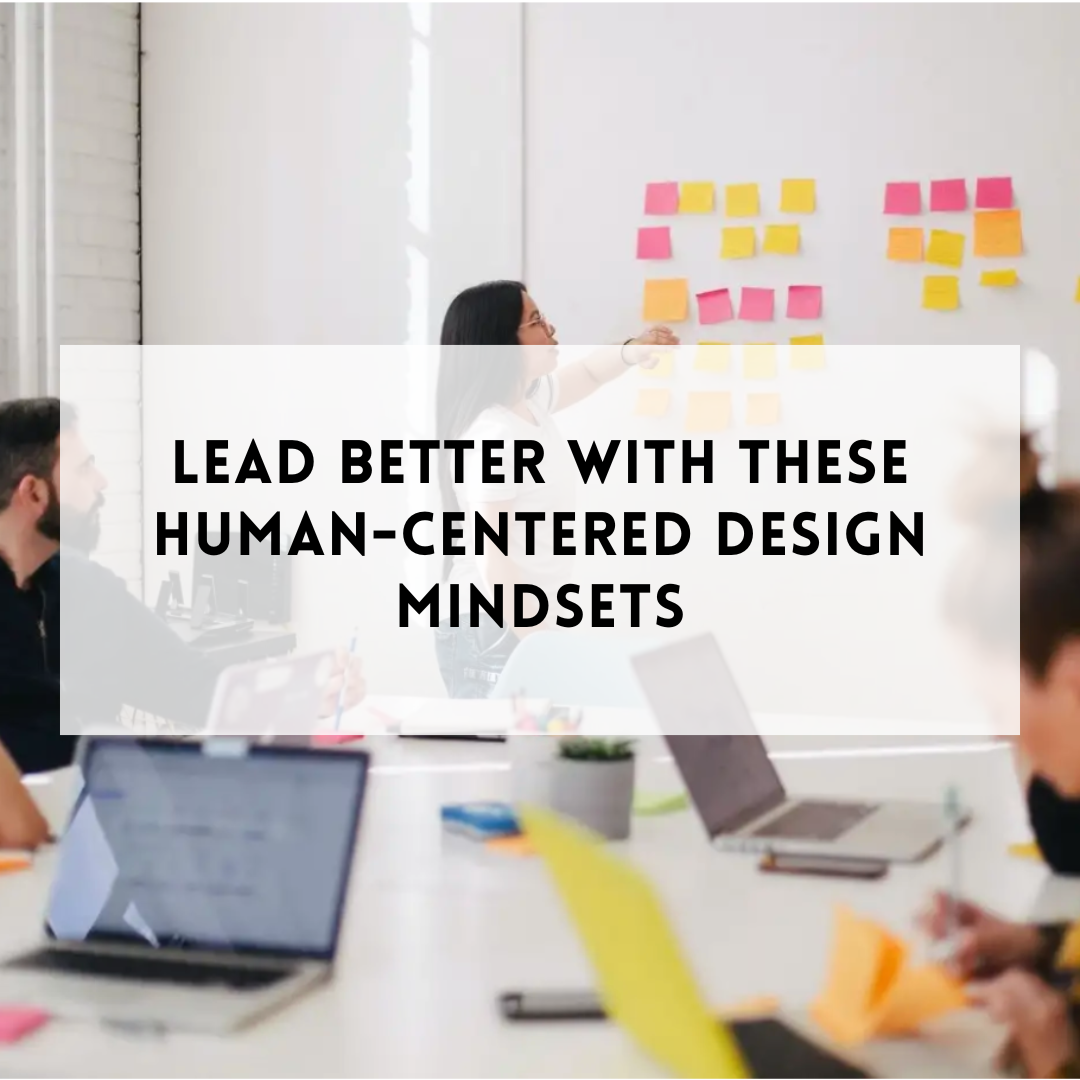Lead better with these human-centered design mindsets
Human-centered design principles have gotten a lot of traction over the past two decades – so much so that the term has gotten a little buzz-wordy. Despite some of the shininess wearing off, these principles are still as important and effective as ever. While I love each of the tenets and use them all in my work facilitating workshops, there are four in particular that I think are powerful leadership mindsets with the potential for big impact thanks to their ability to help teams access more creativity, innovate better, and uncover solutions to seemingly-complex problems.
4 Human-Centered Design Principles as Powerful Leadership Mindsets
Human-centered design (HCD) is an approach to problem-solving that involves designing products, services, systems, or experiences with a deep understanding of the needs, behaviors, and preferences of the people who will be using them. Ultimately, HCD is meant to ensure that the final solution improves the overall user experience and actually solves the user’s problem(s).
While the principles of HCD are commonly used in workshops like Design Sprints, they have a lot of potential to shift the way leaders and their teams operate when they’re woven into the way people work on a regular basis (rather than contained to a workshop). And there are four in particular that are powerful for leaders to apply to their daily leadership style to unlock the potential of their teams.
1. Embracing Ambiguity
This tenant is all about starting from a place of not knowing the answer to the problem you’re trying to solve. In workshops, this is helpful because it creates more openness to different ideas and a willingness to explore multiple options to find the best path forward.
From a leadership standpoint, applying this mindset to your management style means you show up with more openness, are okay with not having all the answers, and ask questions of your team from a curiosity mindset (more on that here).
Of course, you don’t want to be too neutral, but being okay with a little ambiguity sends a message to teams that you’re willing to hear ideas, feelings, and experiences before forming an opinion or direction. Ultimately, this energy gives teams the permission to explore and present paths less traveled, and those may be the very paths that land you on the best, most effective solutions.
2. Optimism
This principle focuses on possibilities, not constraints. In a workshop, it means we always assume that there is a way forward (even if we don’t know what it is yet).
Leading from this mindset means you don’t subscribe to the narrative that something is unsolvable. You encourage teams to try new, creative ways of doing things and look outside the typical places you might normally explore for solutions and answers. It means you’re constantly saying “what else?” and asking questions non-confrontationally. You hold back from shutting down ideas even if you don’t see how they might take shape yet, and you don’t settle for the way things have always been done.
When you lead from this mindset, you empower your teams to leave no stone unturned and no corner unexplored, which opens up more possibilities.
3. Reframing Failure as Learning
I love this principle because it gives teams permission to take calculated risks, which is essential during a workshop where we’re trying to rapidly ideate, problem solve, and prototype.
Someone who leads with this mindset on a daily basis encourages their teams to try new things while also quantifying risk so they can fail in a way that feels safe. Leading this way creates room for experimentation – your teams don’t live in fear of failure because they know they have space to play.
This leader may even build experimentation into the way teams are evaluated to encourage more exploration and remove the fear that failure will affect their livelihood. For example, you might plan structured experiences for your team, like cyclical Design Sprints, so they have room to get creative outside the parameters of their regular job responsibilities.
4. Empathy
Empathy might be another one of those buzz-wordy terms, but for good reason. In my opinion, it’s a necessary and essential mindset of a great leader because people are your most important asset.
In design thinking, your main goal is to understand the person you want to help so you can design something meaningful for them. Leadership is no different – just think of your leadership style as the “service” you provide to your teams. You need to empathize with them the same way you would with a customer.
To that end, leading with empathy means dialing up the compassion, respecting differing opinions and perspectives, and recognizing your teams are human beings with needs and complex lives who show up with more than just their jobs on their minds from day to day.
When you lead with empathy, your team knows you’re a people-first person (remember, while this is driven by your actions, they get to decide if this is true, not you).
If you’re looking to dial up empathy and compassion, I share some of my favorite ways to help people feel more comfortable in meetings and workshops in this post, which can go a long way in creating an energy of openness and safety.
The Benefits of Leading with Human-Centered Design Mindsets
Embracing ambiguity and optimism, reframing failure as learning, and cultivating empathy are more than just principles to employ when gearing up for a workshop or creative project – they have the power to impact the way teams think and work.
Building this culture starts with you as a leader and depends on your ability to show up with these mindsets every day.
When you lead with and apply them beyond the confines of a workshop, it supports a more creative, innovative, and engaged team (one that wants to work for you!).
